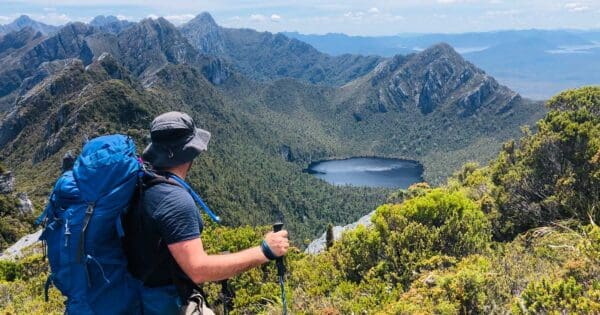March 14, 2018
The Tourism Industry is Assuming Control of Our National Parks
Phil Ingamells highlights two critical cases where the integrity of Victoria’s national parks is under threat from tourism-driven development.
Mount Buffalo National Park: A Land Grab in the Making
For over a year, a proposal for large-scale tourism developments in Mount Buffalo National Park has been aggressively pursued. Despite their legal responsibility for the park, neither Parks Victoria, the Department of Environment, Land, Water and Planning (DELWP), nor the Environment Minister seem to have any say in this process.
The Mount Buffalo Destination Advisory Group, a private consortium, has proposed that six hectares of the national park be handed over to private investors—effectively bypassing national park leasing restrictions. Their plan includes a 47-room ‘Spa Retreat Hotel,’ a day spa, bars, cafés, a function centre, a wedding chapel, an ice/roller skating rink, boutique shops, and even a glass-bottomed walkway over Buffalo Gorge. Additionally, the proposal suggests revamping the old Cresta Lodge and adding more commercial attractions.
This plan essentially seeks to transform Mount Buffalo into a commercial alpine resort, similar to Falls Creek and Hotham. However, Mount Buffalo National Park is one of Victoria’s oldest and most cherished natural areas, first proclaimed in 1898, and deserves vigilant protection.
The Failed Restoration and Misguided Opposition
Parks Victoria had previously submitted a realistic proposal to restore the historic Mount Buffalo Chalet, approved by Heritage Victoria in 2014. The plan involved restoring the chalet’s oldest and most picturesque section while demolishing the deteriorated extensions. However, a misinformed social media campaign opposed the plan, leading to government inaction.
Had the original restoration proceeded, Mount Buffalo could now be a thriving destination for nature lovers, with a fully functioning chalet and a focus on conservation. Instead, a tourism consortium is pushing for an intrusive development that could permanently alter the park’s character.
The Need for Government Intervention
Despite the Victorian Government’s clear policy that tourism developments should be located outside national parks, the Mount Buffalo proposal remains under consideration. The Tourism Minister has allocated $200,000 to the Alpine Shire Council to evaluate the proposal—despite the council having no legal authority over the park.
Parks Victoria and the Environment Minister must assert their authority to stop this development before it’s too late. Mount Buffalo National Park is already a major attraction, drawing approximately 180,000 visitors annually without additional infrastructure. Once inappropriate development occurs, it is nearly impossible to reverse.
The Falls to Hotham ‘Icon Walk’ Fantasy
The push for large-scale tourism development isn’t limited to Mount Buffalo. Tourism Victoria has been promoting ‘icon walks’ to rival Tasmania and New Zealand’s adventure trails. Ignoring Victoria’s existing long-distance trails like the Great South West Walk and the Alpine Walking Track, they have pursued four new routes featuring serviced accommodation:
- The Great Ocean Walk
- The Grampians Peaks Trail
- The Falls to Hotham Alpine Crossing
- A Croajingolong coastal walk
While the Great Ocean Walk successfully incorporated nearby private B&Bs without damaging the national park, the Grampians Peaks Trail’s private cabin plans were scrapped due to a lack of investor interest. However, the Falls to Hotham Alpine Crossing remains in development, with a controversial plan to place luxury huts on a remote spur off Mount Feathertop. Servicing these huts will require daily helicopter flights, and fire regulations will necessitate the clearing of native vegetation.
A Misguided Tourism Strategy
Victoria’s push for in-park luxury accommodations is based on an unrealistic expectation of demand. While long-distance walks attract interest, most visitors to national parks prefer short walks. Rather than pursuing damaging and expensive ‘icon walks,’ Victoria should promote its wealth of short walks, accessible from regional towns with charming accommodations.
This approach would be better for tourism, better for Victorians’ health, and—most importantly—better for the protection of our fragile national parks.
Take Action
Victorians must demand that their government protect national parks from commercial exploitation. The integrity of Mount Buffalo and other treasured landscapes depends on a firm commitment to conservation over corporate interests.
For further information, please contact:
Victorian National Parks Association





